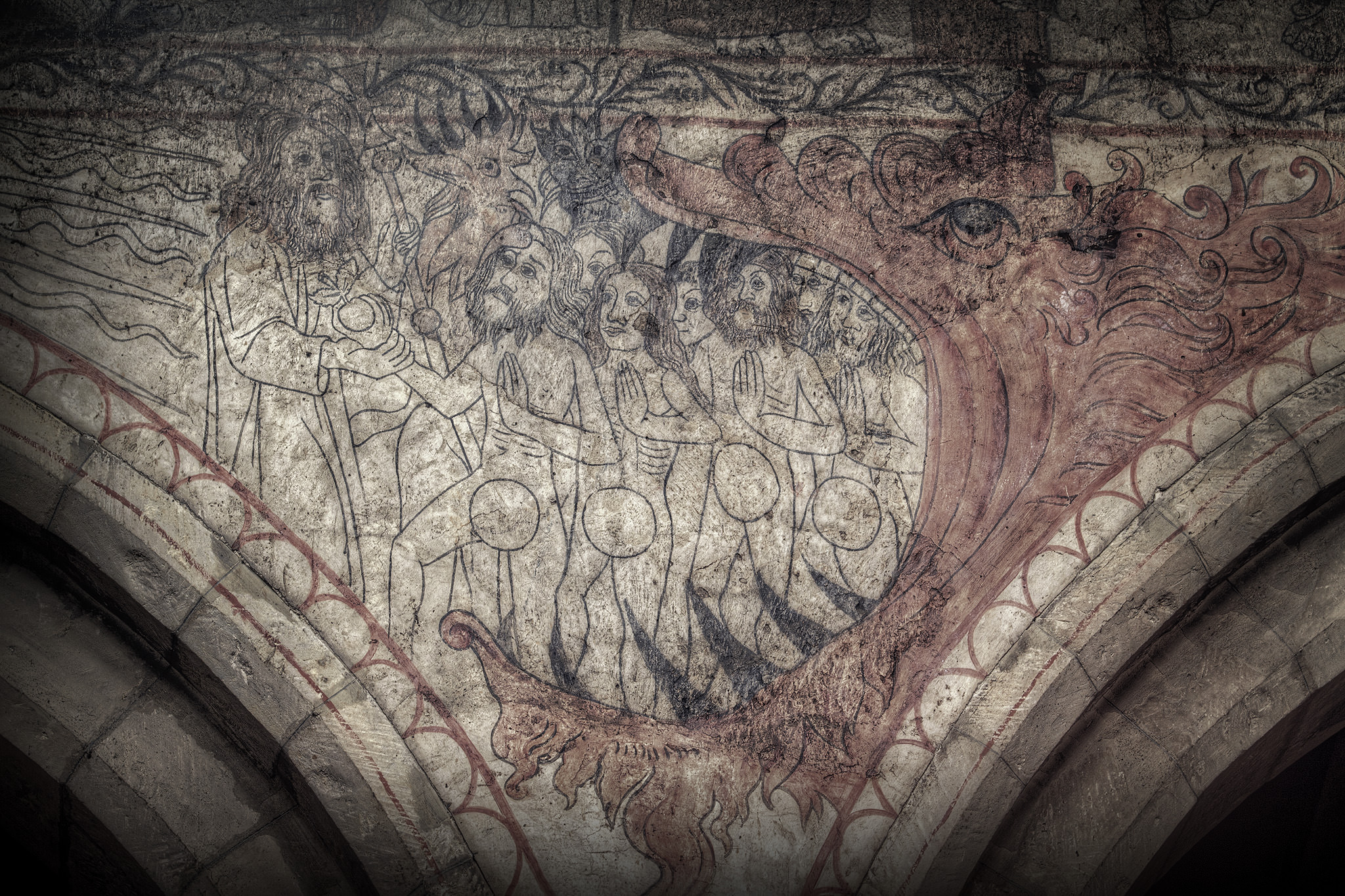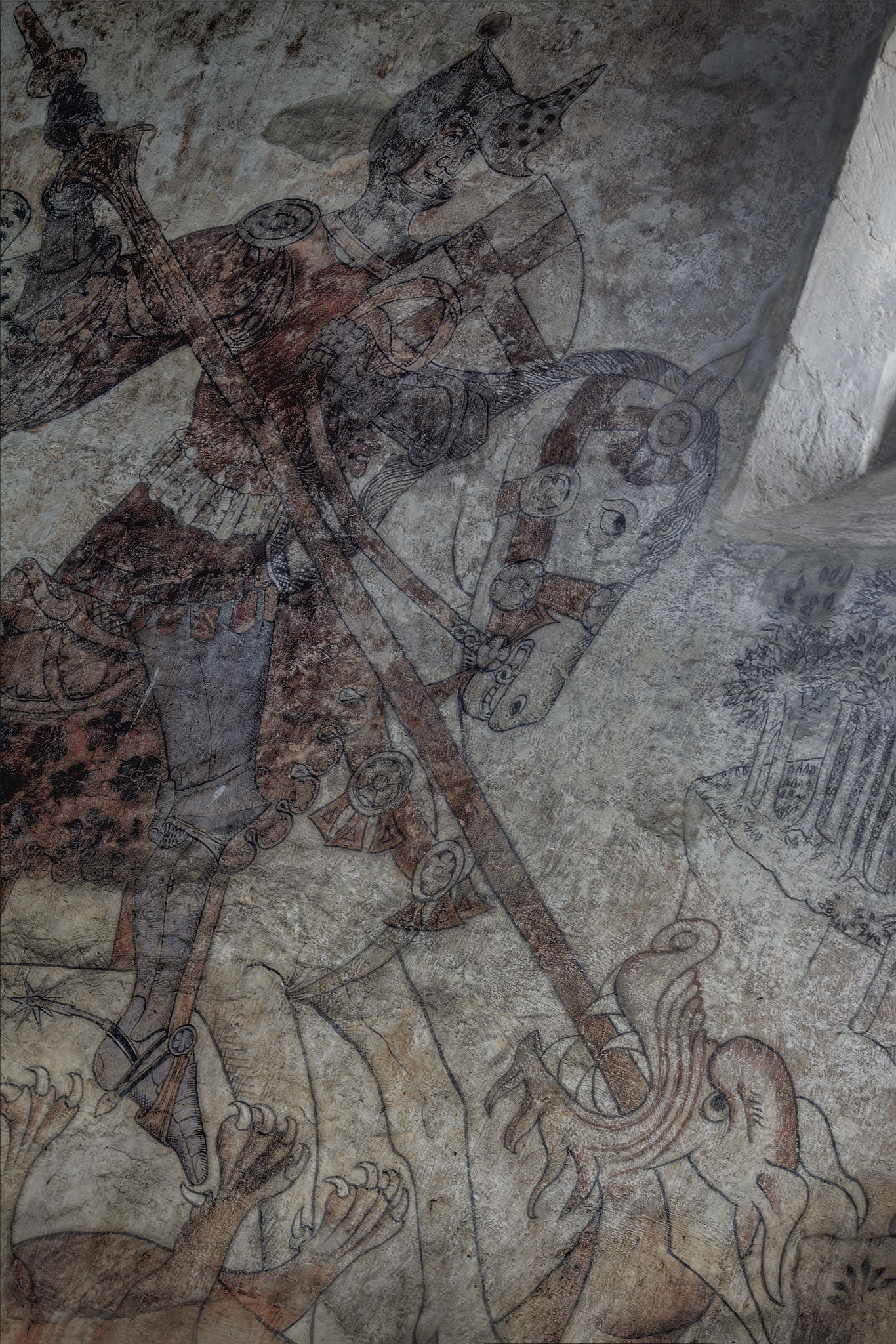Pickering Church, Yorkshire, England


Pickering Church is located in the centre of the town. While everything around it has changed, the church has survived and contains what may be the most complete set of medieval wall paintings in England.
There was originally a Saxon church on this site, which was replace by a Norman church in the 12th Century. At the beginning of the 13th Century, the tower collapsed, taking with it the south transept. The new tower was built in three stages, taking 300 years to complete. From the 12th-15th Centuries the church underwent various additions, extensions and alterations.
The wall paintings at Pickering date from the mid-15th Century. Only 100 years after they were commissioned they were painted over. It was typical for all religious paintings to be covered after the Protestant Reformation, but at Pickering it also had the effect of preserving them for future generations.
The paintings were first discovered in 1852 during restoration work, when the plaster was removed from the walls of the nave. In the 19th Century people began to become interested in the paintings and came to view the frescos but it was decided to cover them again with a thick coat of limewash.
From letters, we know that this caused an argument between the Vicar of Pickering and the Archbishop. The Archbishop seems to have approved of the wall paintings but the Vicar felt they were a distraction from his sermons and were full of ‘Popish Superstitions’.
In 1876, the new Vicar decided that the wall paintings should be restored and the limewash was carefully removed.
In the Middle Ages, nearly all churches had their interior walls plastered and covered with paintings. This was not only done for decorative purposes but also as an aid to worship, allowing the congregation to view biblical stories at a time when many were not literate and the Bible was only printed in Latin.
The wall paintings at Pickering depict scenes showing St. George, St. Christopher, St. John the Baptist, the coronation of the Virgin Mary, St. Edmund, St. Thomas, St. Catherine, the seven corporal acts of Mercy, the Passion and Crucifixion of Christ, the Descent into Hell, and Christ’s Resurrection.
St. George is the patron saint of England. George was born in Palestine in 280 and was a Roman soldier; he converted to Christianity and was persecuted for it. St George became the example of chivalry and courage and is a symbol of the struggle between good and evil.
The painting depicting the descent into hell shows us Christ leading people out of hell, the first in line is Adam who holds the apple and he is followed by Eve. Two demons appear behind them.






